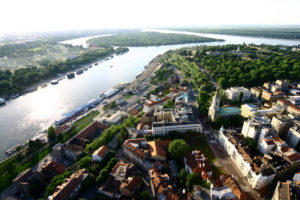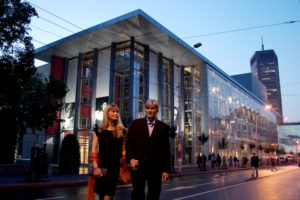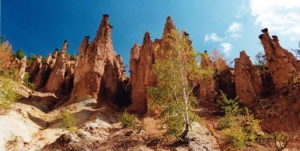Receive our newsletter
Your e-mail address is only used to send you our newsletter and information about the activities of Strasbourg Europe. You can always use the unsubscribe link included in the newsletter.

 Belgrade (Beograd) is the capital of Serbia, and has a population of around 1.6 million. It is situated in South-Eastern Europe, on the Balkan Peninsula, at the confluence of the Sava and Danube rivers. It is one of the oldest cities in Europe and has, since ancient times, been an important focal point of the passion of the east and the finesse of the west. Therefore, the city enjoys a rich artistic, cultural and architectural inheritance. As the capital of Serbian culture, education, science and economy, Belgrade has a multitude of museums and art galleries, such as the Museum of Contemporary Art, the National Museum, the Ethnographic Museum, the Gallery of Frescoes and the Palace of Princess Ljubica. Nightlife in the Serbian capital is one of the most diverse and vibrant in Europe, thanks to its world-renowned operas, concerts and theaters. Visitors can enjoy a night with dinner and live music in the bohemian district Skadarlija, or relax in one of the cafes or an old barge, or visit one of the many night clubs.
Belgrade (Beograd) is the capital of Serbia, and has a population of around 1.6 million. It is situated in South-Eastern Europe, on the Balkan Peninsula, at the confluence of the Sava and Danube rivers. It is one of the oldest cities in Europe and has, since ancient times, been an important focal point of the passion of the east and the finesse of the west. Therefore, the city enjoys a rich artistic, cultural and architectural inheritance. As the capital of Serbian culture, education, science and economy, Belgrade has a multitude of museums and art galleries, such as the Museum of Contemporary Art, the National Museum, the Ethnographic Museum, the Gallery of Frescoes and the Palace of Princess Ljubica. Nightlife in the Serbian capital is one of the most diverse and vibrant in Europe, thanks to its world-renowned operas, concerts and theaters. Visitors can enjoy a night with dinner and live music in the bohemian district Skadarlija, or relax in one of the cafes or an old barge, or visit one of the many night clubs.
The torch has been taken over by the young, talented Jelena Dokic. Born in Belgrade in 1983, her family had to leave Yugoslavia when she was only eleven years old, and settled in Australia. She made herself know during the tournament in Rome in 2001, and since then has not left the top ten WTA ranking. She is a serious contender for Grand Slam titles in the coming years.
Pictures: Monika Seleš, © monica-seles.com
Jelena Dokic, © jelena-dokic.com
Text: WTA Tour
Đavolja varoš – Devil’s Town

Sources of texts:
History
http://www.visite-serbie.com/A-propos-de-la-Serbie/Histoire/Chronologie-historique.3.135.htm
Competitive Edge
http://www.visite-serbie.com/A-propos-de-la-Serbie/Sport/Une-vie-sportive-intense.3.147.htm
Devil’s Town
http://www.visite-serbie.com/Tourisme-en-Serbie/Search.3.288.htm
National Tourism Organisation of Serbia
Your e-mail address is only used to send you our newsletter and information about the activities of Strasbourg Europe. You can always use the unsubscribe link included in the newsletter.
Information Center
on the European Institutions (CIIE)
Europe Direct Information Center
All rights reserved to the CIIE
Non-profit organization
Mailing address
1 allée Kastner
67000 Strasbourg
France
Visitors entrance
8 rue Boecklin
67000 Strasbourg
France
To provide the best experiences, we use technologies such as cookies to store and/or access device information. Consenting to these technologies will allow us to process data such as browsing behavior or unique IDs on this site. Failure to consent or withdrawing consent may adversely affect certain features and functions.
Europe Direct network
The CIIE team
Contact information and opening hours
Lieu d’Europe
The CIIE offices
Contact us
CIIE’s Documentation Centre & Publications
School presentations & Activities
Borrowing of learning material
Activities for the general public
Institutions of the European Union in Strasbourg
Institutions Under the Authority of the Council of Europe
Other European Organisations in Strasbourg
Sessions of the European institutions in Strasbourg
Visiting the institutions
Map of the European district of Strasbourg
Institutions in Strasbourg in photos
Discover artistic Europe
National holidays of the member states of the Council of Europe